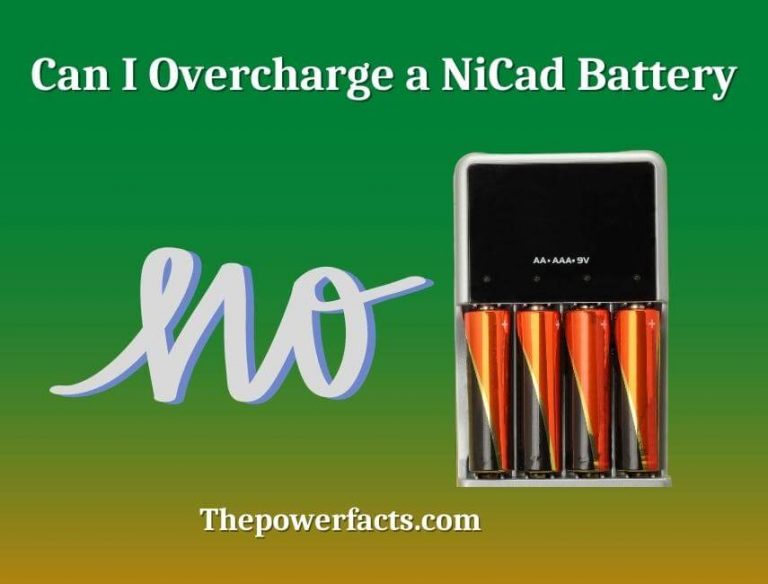
Reconditioning NiCad Batteries: A Comprehensive Guide
Nickel-cadmium (NiCad) batteries, once ubiquitous in power tools, electronics, and other applications, have seen their popularity decline with the advent of more modern battery technologies like lithium-ion. However, these resilient batteries still hold value, especially for those seeking cost-effective and reliable power solutions in specific scenarios. Reconditioning NiCad batteries can extend their lifespan and provide a second lease on life. This guide provides a comprehensive overview of NiCad battery reconditioning, covering the process, its benefits, and important considerations for safe and effective results.
Understanding NiCad Battery Chemistry and Aging
NiCad batteries are composed of nickel oxide hydroxide (NiOOH) as the positive electrode and cadmium (Cd) as the negative electrode. The electrolyte is a potassium hydroxide (KOH) solution. During discharge, cadmium ions (Cd2+) from the negative electrode move to the positive electrode, while hydroxyl ions (OH-) move in the opposite direction. This flow of ions generates electricity.
Over time, NiCad batteries experience degradation due to various factors:
- Memory effect: When batteries are consistently partially charged and discharged, they can develop a "memory" effect, where they only accept a limited charge equivalent to their previous discharge levels. This can lead to reduced capacity and premature failure.
- Crystallization: As the battery ages, cadmium crystals can form on the electrodes, hindering their ability to participate in the chemical reaction, leading to reduced capacity and increased internal resistance.
- Electrolyte degradation: The electrolyte solution can degrade over time, decreasing its conductivity and affecting the overall performance of the battery.
Reconditioning Process: A Step-by-Step Guide
Reconditioning NiCad batteries involves a process of deep discharging, followed by a prolonged charging cycle. This process aims to reverse the memory effect, break down crystal formations, and restore the battery's capacity. While various approaches exist, a common method includes these steps:
Step 1: Deep Discharge
Connect the battery pack to a load that draws a high current, such as a light bulb or a resistor. Discharge the battery until it reaches its absolute minimum voltage (typically below 0.8 volts per cell). This step is crucial to fully depleting the battery's charge and breaking the memory effect.
Step 2: Rest and Recovery
After deep discharging, allow the battery to rest for at least 12 hours. This resting period permits the internal chemical processes to stabilize and prepare the battery for the charging cycle.
Step 3: Recharging
Connect the battery pack to a suitable NiCad charger and charge it at a low current rate (around C/10 or lower) for a prolonged period, typically 12-24 hours. This slow charging allows the electrolyte to penetrate the electrodes and restore the battery's capacity.
Step 4: Repeat Cycles (Optional)
For significantly aged batteries, multiple reconditioning cycles may be necessary to achieve optimal results. Repeat the deep discharge, rest, and recharge steps for 2-3 cycles to ensure complete restoration of the battery's capacity.
Benefits of Reconditioning NiCad Batteries
Reconditioning NiCad batteries can offer several advantages:
- Extended Lifespan: Reconditioning can significantly extend the operational life of NiCad batteries, allowing you to use them longer before needing to replace them.
- Restored Capacity: NiCad batteries can experience a noticeable drop in capacity over time. Reconditioning helps restore their capacity, enabling them to hold a higher charge and power devices for a longer duration.
- Reduced Internal Resistance: Reconditioning can reduce internal resistance, leading to better performance and increased efficiency.
- Cost Savings: Replacing NiCad batteries can be expensive, especially for high-capacity packs. Reconditioning offers a cost-effective alternative to purchasing new batteries.
Safety Precautions and Considerations
While reconditioning NiCad batteries can be beneficial, it's essential to exercise caution and follow safety guidelines:
- Ventilation: NiCad batteries can release hydrogen gas during the charging process, which is flammable. Ensure adequate ventilation during reconditioning to prevent the accumulation of flammable gases.
- Temperature Control: Excessive heat can damage NiCad batteries. Monitor the temperature of the batteries during the reconditioning process and ensure it remains within the manufacturer's specifications.
- Battery Condition: Do not recondition damaged or leaking NiCad batteries. These batteries pose safety risks and should be disposed of properly.
- Use a Suitable Charger: Only use chargers specifically designed for NiCad batteries. Using an incompatible charger can damage the batteries or lead to safety hazards.
- Professional Assistance: If you're unsure about the reconditioning process or have concerns about safety, consult a qualified technician or battery specialist.
Conclusion
Reconditioning NiCad batteries offers a viable option to extend their lifespan and restore their performance. However, it's crucial to understand the process, follow safety guidelines, and use appropriate equipment. While reconditioning can be a cost-effective solution, it's important to weigh the benefits against the potential risks and to seek professional assistance when necessary.
With careful attention to safety and proper techniques, you can successfully recondition NiCad batteries and enjoy their continued use for a longer period. As always, prioritize safety and responsible battery management to ensure the longevity and reliable performance of your NiCad batteries.
0 Response to "Can You Recondition NiCad Batteries Without Damaging Them?"
Post a Comment
Note: only a member of this blog may post a comment.